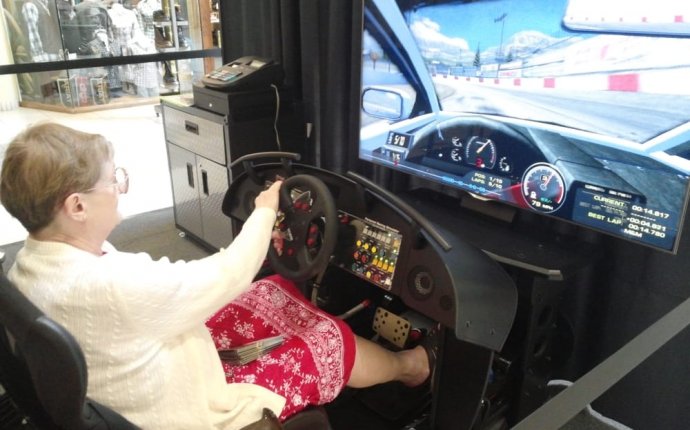How Can I Drive A Race Car

So, you're thinking about driving a race car? That's awesome! It's a completely different beast compared to your everyday driver. It demands precision, understanding, and a healthy respect for the machine. Forget everything you *think* you know about driving; racing is about pushing the limits of grip, braking later, and carrying more speed through the corners. This isn't something you just jump into; it requires learning the fundamentals and, crucially, understanding the car you're piloting. This article focuses on how to approach this task, and get behind the wheel of a race car. Let's dive in.
Purpose – Mastering the Machine
Why bother understanding the intricacies of race car driving? Well, besides the obvious – going faster – it's about control. It's about knowing what the car is doing and having the tools to correct it. Whether you're diagnosing why you're losing time in a particular corner, communicating effectively with your race engineer, or even just setting the car up for optimal performance in different conditions, a solid understanding of driving technique is critical. It also enhances your safety. Knowing how to react to a slide, anticipate oversteer, or recover from a spin isn't just about speed; it's about staying on the track and out of the wall.
Key Concepts and Driving Techniques
Seating and Ergonomics
First things first, get comfortable! A proper seating position is paramount for car control and long-term driving comfort. Ensure the seat is positioned so you can fully extend your legs to the pedals without locking your knees. Your arms should be slightly bent when holding the steering wheel. Many race cars feature custom seats, so getting fitted by a professional is important.
Steering Technique
In racing, steering is about finesse, not brute force. Grip the wheel firmly but relaxed. Employ smooth, deliberate inputs. Avoid jerky movements, which can upset the car's balance. Experiment with different steering wheel positions (9 and 3, 10 and 2) to find what works best for you. As you improve your skills, you will realize that the less you use the steering wheel, the faster you will be. This is because the more you steer the car, the slower you will be as a result of scrubbing speed off the tires.
Braking Technique
Braking in a race car is aggressive and precise. It's all about threshold braking – applying maximum braking force right up to the point where the tires begin to lock up. Master the feel of the limit and modulate the pedal pressure to maintain optimal deceleration. Use trail braking by slowing down at the beginning of the turn to help shift the weight forward and assist in turning the car.
Throttle Control
Like braking, throttle control is a delicate art. Apply the throttle smoothly and progressively. Avoid abrupt movements, which can cause wheelspin and loss of control. Practice rolling on the throttle early in the corner to stabilize the car and maximize exit speed.
Weight Transfer
Understanding weight transfer is crucial for car control. Braking shifts weight forward, increasing grip on the front tires and decreasing grip on the rear tires. Acceleration shifts weight rearward, increasing rear grip and decreasing front grip. Steering transfers weight to the outside tires. Being aware of how these weight shifts affect the car's balance is critical for maintaining control.
The Racing Line
The racing line is the optimal path around the track. It's about maximizing corner radius and minimizing distance. Typically, it involves braking before the corner, turning in early, clipping the apex (the inside point of the corner), and accelerating out wide. Learn the racing line for each track and adapt it to your car's characteristics and the conditions.
Real-World Use – Basic Troubleshooting Tips
Okay, so you're on the track and something feels off. What do you do? Here are a few basic troubleshooting tips:
- Oversteer (the rear of the car slides out): Counter-steer gently in the direction of the slide. Reduce throttle and apply gentle braking.
- Understeer (the car doesn't turn in): Reduce speed by lifting off the throttle or applying gentle braking. Increase steering angle slightly and patiently wait for the front tires to regain grip.
- Wheelspin (tires spinning under acceleration): Reduce throttle input immediately. Be smoother with your acceleration.
- Brake Fade (reduced braking performance): Increase braking distance and consider allowing the brakes to cool down. Check brake pad and rotor condition.
Safety – High-Risk Components
Safety is paramount in racing. Always wear appropriate safety gear, including a helmet, racing suit, gloves, and shoes. Ensure your car has a properly installed roll cage, racing seat, and safety harness. Inspect your car thoroughly before each session, paying particular attention to the following high-risk components:
- Brakes: Check brake pad thickness, rotor condition, and brake fluid level.
- Suspension: Inspect shocks, springs, and suspension components for damage.
- Tires: Check tire pressure, tread depth, and sidewall condition.
- Fuel System: Inspect fuel lines and fuel cell for leaks.
Racing involves inherent risks. Always drive within your limits and be aware of your surroundings. If you are not sure what to do, go slower until you have the knowledge or skill to go faster. With practice, dedication, and a healthy respect for the machine, you can unlock the thrill and skill of driving a race car. The best part is the journey.
